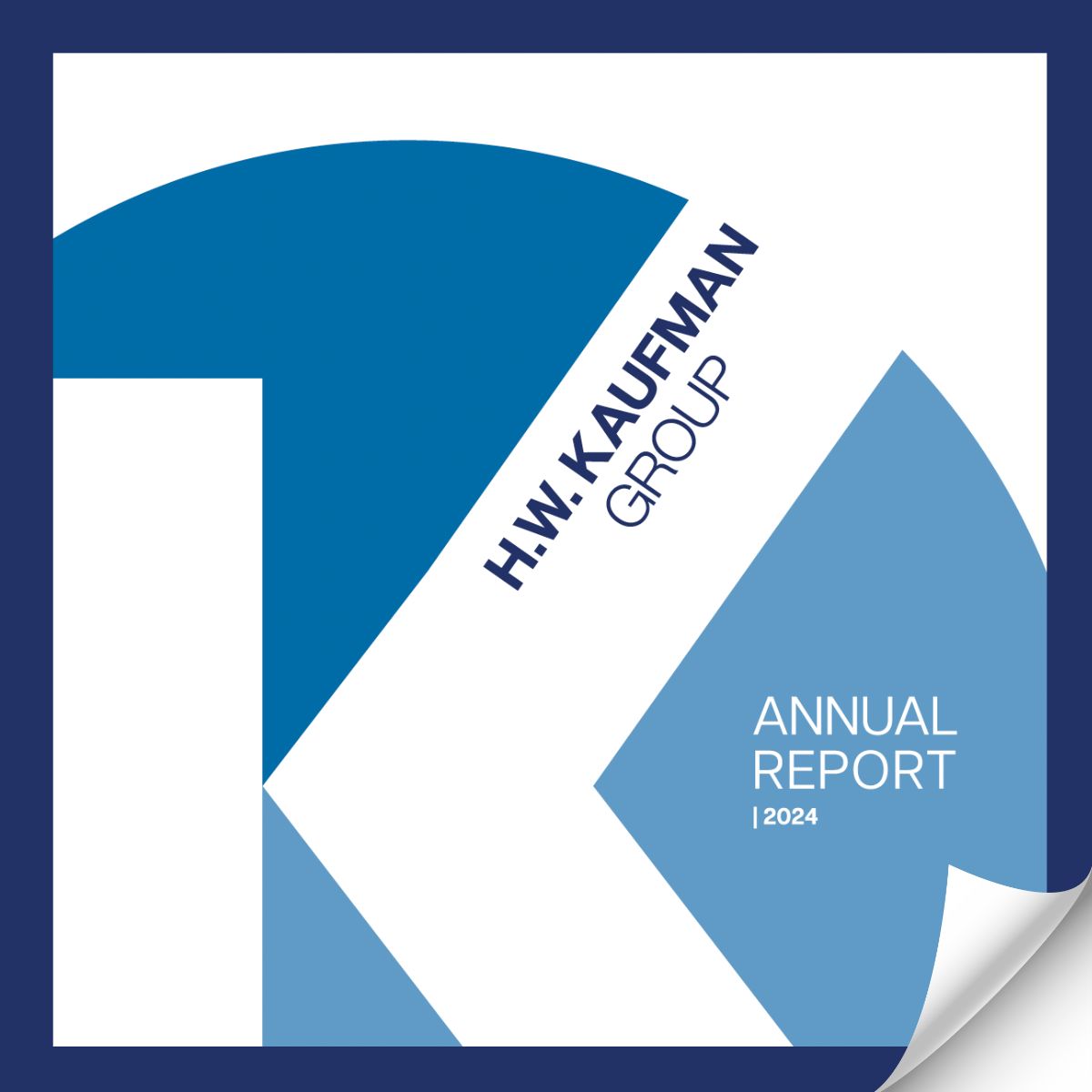2022 was a year that few in the Property and Casualty (P&C) sector could have predicted. Instead of stability, the market remained largely volatile, especially in the Property sector and the reinsurance marketplace. Many carriers suffered through unprofitable years thanks to Hurricane Ian, inflation, and an adverse property insurance environment primarily in Florida and Gulf coast states.
Above all, losses continue. Natural catastrophe losses of $115 billion have exceeded the 10-year average by 40 percent in 2022, according to Swiss Re. The scale of damage from natural catastrophes put 2022 as the second consecutive year in which losses exceeded $100 billion. This continued the trend of 5 to 7 percent average yearly rises in catastrophic losses over the past 10 years, according to Swiss Re.
Furthermore, AM Best reported on December 1, 2022, that U.S. P&C insurers recorded a $24.3 billion underwriting loss over the first nine months of the year, $17.9 billion worse when compared to the first three quarters of 2021. While pending revenue and loss figures for the industry in 2023 are unknown, continued volatility is likely.
One of the biggest takeaways from 2022 is that work needs to be done to update legislation in Florida that allows carriers to reduce losses. Given the increase in CAT storms in the state and the potential economic impact any one storm can have, as we saw with Hurricane Ian, it is highly probable the majority of business owners and homeowners will experience insurance coverage changes in Florida.
Florida’s state legislature has developed legislation that if passed, would eliminate one-way attorney fees and its controversial assignment of benefits (AOB) right. The bill would create Florida Optional Reinsurance Assistance scheme, under which eligible insurers can optionally buy hurricane reinsurance at “near market rates,” according to Inside P&C. This could be enacted on top of a $2 billion extension of state reinsurance cover in 2022 through the Reinsurance to Assist Policyholders program. These and other steps are needed to create an environment that can lessen the financial impact of CAT storms in the Sunshine State.
Such legislation would have a positive impact on the market and property owners in Florida, but it would not prevent massive losses caused by such CAT storms as Hurricane Ian. The intense Category 4 storm in late September packed winds of up to 155 mph, caused more than 100 deaths, and led to an estimated $65 billion in losses along the state’s southwest coast, according to Swiss Re. However, that estimate may be understated when personal auto and other losses are added, not to mention the loss of jobs in cities like Ft. Myers Beach.
Hurricane Ian was among the major factors in Allstate’s significant personal auto losses. Allstate had an $875 million preannounced reserve change including $634 million in personal auto. The Insurer also reported that Allstate’s homeowners’ insurance division announced estimated net losses of $366 million from Ian.
Yet the bigger picture goes well beyond Florida. The P&C market is profitable in fewer parts of the U.S. as CAT events seem to impact virtually every state. The 2021 deep freeze and resulting power crisis in Texas, wildfires in virtually all states including and west of Colorado, a convective storm hitting the Plains and Midwest, and flood events seemingly everywhere are a regular occurrence. We even saw a 6.4 magnitude earthquake in northern California on December 20 followed by massive storms through the first few weeks of 2023 that deluged the state throughout the coastal counties north of Los Angeles, dropping unprecedented amounts of rain with high winds. These CAT events show no signs of slowing down heading into 2023.
RATE
Rates vary greatly depending upon many factors and as always, it is difficult, and candidly unwise, to categorize with a broad statement. Factors such as line of business, individual account loss history, location of risk, loss mitigation techniques employed, overall market appetite, industry classification, and more must be factored into the equation.
While generally speaking we have seen several years of increasing rates, primarily due to a prolonged soft market, the dynamics are shifting. Financial inflation and geo-political disparity are fueling the latest concerns among capital providers within the industry for the first time in more than a decade. Unlike the shift in policy rates that commenced in earnest in 2018, we are now seeing direct insurers and reinsurers alike blend rate changes with other tools to control exposure as mentioned throughout this report. Examples include more rigorous policy terms, conditions and clauses including exclusions, retentions, and limit deployment. While rates may not be increasing at the same pace as the last few years, underlying exposures (Sales, Payroll, Valuations, etc.) are increasing at an alarming rate as the economy gets rolling again following the pandemic trough exacerbated by economic inflation.
This is proven in CNA’s Q3 analysts’ call where they stated they are seeing stronger exposure-related premium from inflation-sensitive lines such as Workers’ Compensation, Property, and General Liability. Their CEO went on to say, “We feel good about renewal dynamics,” indicating that while rates may be reaching somewhat of an equilibrium, premium surely is not decreasing, but rather increasing.
CAPACITY
From a Casualty perspective, capacity is readily available for practically all clients. Costs will still vary based on several factors, but the professionals at Burns & Wilcox stand ready to exceed expectations and provide clients with multiple options.
As you can expect, the story is different with Property. Without sounding like a broken record, location matters. Supply is low and demand is high in Florida, but also in many parts of the Southeast and Gulf Coast. The same is true for the Western states most heavily impacted by wildfire. States commonly impacted by convective events like hail and tornadoes (think of Oklahoma, Kansas, Colorado, and bordering states) may also experience decreased capacity.
Professional liability areas have capacity, but some of these coverage areas may become tight depending on the direction of the U.S. economy. The increase in interest rates is expected to cause unemployment to rise and stock prices to fall, which can adversely impact capacity and costs for Directors and Officers (D&O) and Employment Practices Liability Insurance (EPLI). It is too early to gauge the true impact and may depend largely on the level and depth of a recession.
One capacity trend is clear—carriers are extremely cognizant of where capacity is deployed and are strategic in making these decisions. They will largely manage their portfolios based on maximum foreseeable loss and may choose to retain coverage rather than purchase reinsurance because of the expense. Other carriers may choose to pass on reinsurance altogether. Insurance Insider reported in December 2022 that Chubb has cut back its plans to extend catastrophe reinsurance in the wake of Hurricane Ian and a further hardening P&C market.
TERMS & CONDITIONS (T&C)
Terms and conditions on policies may have changed to help protect carriers from increased exposure. Carriers will continue to monitor terms and conditions closely in 2023 and make careful underwriting decisions. Clients should quantify the value of various terms or conditions to determine if they may want to elect to scale back policy coverage scope to help offset increased premiums.
Brokers and agents should always pay close attention to coverage details within policies. Not only should the fine print be read, but it is important to carefully read the entirety of what is embedded within the four corners of the policy. Clients should recognize that additional coverage may be necessary to properly protect assets based on some of these restrictive terms and conditions.
Additionally, they should remember that the Specialty and Excess and Surplus (E&S) marketplace offers more latitude for terms and conditions compared to the standard market. That is one of several reasons why such large carriers (i.e., The Hartford and Liberty) are heavily investing in E&S specialty divisions to take advantage of that increased latitude. Burns & Wilcox can help clients navigate through the often confusing and variable elements of terms and conditions which differ from one carrier to the next.
Contributor: Paul G. Smith, Corporate Senior Vice President, Carrier Relations, H.W. Kaufman Group
Q1 2023 FORECAST BY LOB
Our industry-leading subject matter experts dissected the marketplace and provided insights on the Burns & Wilcox P&C Market Outlook: Eye on 2023 webinar, hosted January 5, 2023.
The state of the P&C market provides an important opportunity to review and shore up your portfolio. Carriers will continue to emphasize profitability and risk mitigation. Given that, it is critical to consider the long-term view, and imperative to find a partner that you can trust.
Considering E&S options and communicating in advance will prove valuable in securing much-needed coverage for clients. The E&S market was created as a safety net and release valve for admitted markets to allow for creative and flexible options—and was really built for this type of hard market where it is otherwise difficult to find the capacity at the preferred rates because of unprofitability.
Below, our experts provide further guidance, delving deeper into specific areas with advice and outlook.
PERSONAL INSURANCE (US)
The P&C marketplace in 2023 should look remarkably similar to the past 12 months, with many of the same challenges remaining in place. This is especially true in the Personal Insurance market, where profitability remains a significant issue, causing higher reinsurance rates and lower capacity for carriers offering Homeowners’ coverage. While this is especially true for consumers living along exposed coastlines and in fire-exposed areas, everyone is paying higher premiums. That is because property rates will increase just about everywhere, just at different percentages depending on risk.
Concerns over profitability, catastrophic weather events and the ability to get rates and forms approved in a timely manner are causing many Personal Insurance carriers to look to the surplus lines market for immediate and creative solutions for retail brokers and their clients. The good news is that there is capacity available in the surplus lines market for brokers and agents who need it, but it will come at a price and will be reserved for the highest quality business submissions.
The extension of this three-year hard market is largely catastrophic storm driven, affecting both Personal and Commercial Insurance. When Hurricane Andrew struck parts of Florida and Louisiana in 1992 it was considered the first $30 billion CAT storm as a Category 5. Seven such storms accounting for more than $30 billion in damages have occurred in the last six years. Six of the nine Category 5 hurricanes to ever hit the U.S. mainland have also happened the last six years.
Mitigation efforts can go a long way in helping a client reduce risk and appear more insurable. Burns & Wilcox offers tools to help cover and reduce risk, from our new Wind Deductible Buyback Program launched last year to our highly successful partnership with Wildfire Defense Systems. Investing in specific types of windows, roof and building materials favored by risk mitigators based on local risks like flooding and fire can go a long way toward supporting the ability to get the necessary coverage for full protection.
Ensuring accurate replacement costs and building value is also necessary in this environment of high inflation and variable costs. Carriers will favor accuracy in these areas and all information supplied on renewal and application forms.
Contributor: Bill Gatewood, Corporate Senior Vice President, National Personal Insurance Practice Leader, Burns & Wilcox, Detroit/Farmington Hills, Michigan
COMMERCIAL INSURANCE (US)
Property:
As would be expected, many of the same market challenges in Personal Insurance exist in Commercial Property Insurance as well. Hurricanes are not the only catastrophes of concern either. Significant Texas freezes in January 2021 and December 2022 and a wide range of convective storms and wildfires made January 1, 2023, reinsurance renewals difficult to predict. Every property carrier is expected to install significant price increases.
As a retail broker or agent, you need to expect a continuation of the increase in rates, underwriting discipline, and demand for proper valuations. Most carriers will be reducing their capacity offering.
From a Property Insurance perspective, we have 40 or 50 markets we deal with daily, and that is all our Property subject matter experts do—so as an agent when you get to the more difficult to place accounts, be sure to involve your Burns & Wilcox partner.
Perhaps the most significant recommendation for brokers and agents is to be proactive in communicating with clients. Burns & Wilcox experts suggest a 90-day window to allow plenty of time to review and discuss necessary limits, retention changes, deductible increases and more. This can be difficult when working with entrepreneurs and business professionals but planning with your clients can help increase the chances of securing preferred options.
Advanced planning can also help more effectively manage client expectations. Planning includes conversations on the likelihood of rate increases, especially on an account that has suffered many recent losses. It ensures that all parties are looking for all viable alternatives in addition to traditional insurance transfer.
Brokers in general need to educate all Commercial clients on the state of the insurance market in general. This can make difficult discussions easier, such as commercial trends and why rates are not decreasing as they may be in the Casualty sector. This will help clients become more adaptable to different solutions.
As always, timely, complete, and thorough submissions will be given priority consideration by carriers, a consideration especially true in the very competitive Commercial Property market. With a high volume of submissions in this environment, many are rejected quickly because they come in at the last minute, or do not provide the full set of information that is required. Submission quality will remain a necessity.
Contributor: Barry Whitton, Managing Director, Broker, Property, Burns & Wilcox Brokerage, Atlanta, Georgia
Casualty:
In Casualty, there are few worries about capacity constraints. The E&S market has proven extremely useful with several new market entrants. Roughly 25 new carriers entered the Umbrella market alone since 2020. We are still seeing carriers managing limits of $5 million for a lead, however for excess, we are starting to see some with limits of $10-$15 million available.
We also saw new capacity in the Primary space as well. Even difficult to insure sectors like long-haul trucking had several new Excess Liability entrants. These new entrants are still cautious, typically managing their limits to $2 million blocks of capacity low down in excess truck towers.
While we have stabilized in Casualty, one factor that could force a hardening of the Casualty market is an increase in claims activity. Court systems have primarily been closed or at minimum limited for the last 18 months during COVID, therefore we expect to see claims activity accelerate over the coming year.
Other reductions in coverage are possible for high-risk sectors like cranes and high-rise buildings given recent collapses, but clients with a favorable loss history will fare well.
Contributor: Adrian Smith, Managing Director, Broker, Casualty, Burns & Wilcox Brokerage, Chicago, Illinois
PROFESSIONAL LIABILITY (US)
Errors & Omissions (E&O):
E&O premiums are starting to level off. The market continues to add more capacity and new entrants, which is expected to continue into 2023. Rates are expected to trend upward toward a milder 5-10% increase depending on size of the firm and scope of services. Within the Contractors and Architects & Engineers (A&E) space there are some exposures that will continue to push rate up to 10% with A&E carriers reporting an increase in severity of claims. Some Contractors/A&E markets have reduced capacity resulting in the need for insureds to look to excess markets to meet limit requirements, which comes at an additional cost. Condo projects continue to be the frontrunner for the most hazardous class from an underwriting perspective.
Allied Health:
The market appears to be stabilizing; however, rates are not expected to decrease in 2023. Rate increases are expected to increase in some classes 5-15%. The market continues to experience increases in retention, capacity crunches and sexual abuse as well as communicable disease exclusions in some classes of Allied Health, all leading to reduced coverage and increased premiums.
Senior Living:
Senior living claims continue to increase, with assisted living claims being higher than skilled nursing. Facilities with favorable venue and loss experience should expect increases 5-25%, however facilities with adverse loss experience and poor venue will likely be much higher. Insurers are still very selective in the litigious venues and unwilling to deploy additional capacity. Emerging from the pandemic, challenges remain in senior living and long-term care with respect to coverage issues and insurance capacity. Insurers are therefore seeking additional information related to staffing adequacy, virus statistics and financial stability prior to offering renewal terms. Insureds that have elopement, infection prevention, control plans and fall management will likely be viewed more favorably.
Directors & Officers (D&O):
The private, non-profit market looks to continue to soften in 2023, with insureds seeing flat to minimal increases of 5%. New entrants will also likely result in potential premium relief. Broader terms, competitive pricing and greater capacity will continue to drive a more competitive marketplace. The market for distressed insureds will however continue to be challenging.
Cyber security is a critical component of a company’s oversight. Board members are expected to develop and maintain IT accountabilities as part of their oversight. Failures to protect client assets and data can be seen as a breach of duty.
ESG-related issues are another major concern for boards. Increased reporting and demand requirement could trigger claims due to non-compliance or insufficient response. Another risk is misrepresenting ESG credentials or accomplishments, known as “greenwashing,” which can also lead to regulatory action, litigation, and shareholder suits.
Employment Practices Liability (EPL):
The EPL market is still seeing some rate increase. Insureds should be prepared to expect flat to 10% increases unless there is unfavorable loss history or change in exposures. COVID-19-related ligation looks to have mostly slowed down outside of healthcare while discrimination continues to be a leading peril.
Social-driven movements, court rulings and changes in the economy could impact EPL during 2023 (i.e., ESG, pay equity, Dobbs v Jackson, inflation). Biometric privacy and Artificial Intelligence (AI) in the workplace are also two trends that could affect EPL moving forward.
Contributor: Derek Kilmer, Associate Managing Director, Burns & Wilcox, Detroit/Farmington Hills, Michigan
TRANSPORTATION INSURANCE (US)
The final quarter of 2022 proved somewhat challenging as we witnessed top line production being tempered for several reasons. While we continue to see competition from all sides, the regression is primarily driven by a transportation sector that is feeling the effects of an economy under pressure.
From a Cargo perspective, inbound shipments declined with a weakening demand for product both pre- and post-holiday. Freight rates moderately declined over the last several months but are down significantly from the same time last year. This combination has led to increased capacity in the truck transportation world. From an insurance carrier and wholesaler/retailer perspective, this overcapacity and looming of a potential recession is leading to increased policy cancellations and exposure reductions.
While we are seeing challenges in most segments of the truck transportation segment, it is primarily in the non-fleet and small fleet risks. These smaller companies are really feeling the pain of the economic challenges.
The large fleets for the most part continue to thrive and in many cases are looking to increase units over the next year. The issue these insureds are having is finding units to add as production has been unable to keep up with demand/bounce back from the supply chain shortage over the last several years. Many truck companies have experienced long delays—in some cases over one year—in getting new equipment. New truck producers have started to increase production, but it may still take another year or two to get back to normalized production rates and catch up with demand.
All in all, it continues to look like the truck transportation market will struggle while the economy wavers. Indicators would suggest this may be more so for the smaller truck companies with potentially less new ventures entering the picture. As is always the case, transportation is a leading indicator of future economic activity—so as we see the transportation industry rebound you can bet so will our economy.
Contributor: Gene’ Cain, Broker, Transportation, Burns & Wilcox Brokerage, Atlanta, GA
ENVIRONMENTAL INSURANCE (US)
Environmental:
Climate change and weather continue to be a reoccurring trend, which is linked to the spread of environmental contaminants, and mold claims—both of which will continue to be on the rise into 2023.
Rates remain flat and in many instances are trending down. Capacity continues to be strong in the environmental sector which keeps rate increases in line.
Environmental social governance (ESG) continues to be a focal point and carriers are evaluating insureds who contribute to climate change and price accordingly. ESG represents how an organization approaches climate change and carbon, to name a few, and how prepared the company is to manage operational risk in their third-party ecosystem. The insurance industry is in the early stages of adopting ESG considerations, and we expect to see more movement in 2023 and beyond.
The increase in the frequency and severity of environmental claims is expected to continue in 2023. Pollution incidents are becoming more frequent and severe, largely driven by natural disasters. Mold and Legionella claims are also on the rise.
In addition, claims continue to increase due to perfluoroalkyl and polyfluoroalkyl substances (PFAs), also known as “Forever Chemicals.” The Environmental Protection Agency has advised that exposure to the man-made chemicals has been linked to adverse human health risks. In addition to PFAs, another forever chemical which continues to be on the radar for regulators and insurers is glyphosate which is found in weed-killing products with several lawsuits pending.
The demand for Pollution Legal Liability continues to grow as does Contractors Pollution Liability, primarily due to the increase in construction activity as well as mergers and acquisitions emerging from the pandemic.
Tightening terms and conditions continue to point to a hardening market with carriers adding higher deductibles and pulling back on limits and capacity. This points to rates potentially stabilizing in 2023 after being soft for over 10 years.
Energy:
While the energy sector remains in a hard market with capacity challenges, global oil production and consumption has climbed to pre-pandemic levels, and rig activity is up significantly.
Beyond geopolitical factors, investments in ESG programs and technologies supporting those programs are growing as well. This is a result of governmental regulations and mandates, corporate desires and general consumer will. Energy companies are investing in technologies designed to capture emissions and improve efficiencies to reach net zero carbon emissions in the years ahead. Brokers and agents are regularly working with clients to address ESG planning, which includes finding policies that support such efforts as landfill strategies, thermal recovery, lead reduction and more.
Through Burns & Wilcox, we have binding authority in-house, access to an exclusive Oil & Gas Consultants Program, and a broad appetite for renewable energy risks. The professionals at Burns & Wilcox have the experience and industry connections to identify the best solutions and secure options for any insurance need. This includes the ability to package General Liability, Pollution, Professional Liability, Companion Auto, Companion Workers’ Compensation, Property, Inland Marine, Excess and Cyber policies.
Many energy companies in the U.S. are investing in more renewable innovations such as windmills and solar technologies, the latter more possible because of advancements in storage technologies and solar batteries. The insurance industry is adding investments in these areas too, with more retailers and brokers establishing renewable divisions of experts. Renewable energy will comprise an even larger share of the market as investments grow.
As the Energy industry continues to evolve with global and economic trends, building and maintaining strong relationships with carriers is critical for brokers and agents to ensure access to available coverage for clients. Quality submissions that answer all required questions, while providing any additional profile details, is advantageous. Creativity in identifying available solutions, selling based on coverage and value rather than price, and partnering with multiple carriers positions brokers and agents favorably no matter how oil and natural gas prices fluctuate.
Contributor: Gina Jones, Vice President, Director, Environmental Programs, Burns & Wilcox, Denver, Colorado
PERSONAL INSURANCE (CANADA)
Severe weather patterns, including current low temperatures and heightened snowstorm activity in parts of the country, continue to impact the Personal Insurance Property market. The extent of CAT loss exposure following wildfire, hurricane and other CAT activity over the past year has yet to be fully determined but will continue to place pressure on insurer profitability, capacity, and rates moving forward. In 2023, we can also expect reinsurance rates to increase further and for insurers to adjust rates, tighten risk appetite, and revise underwriting expectations in turn.
The housing market has also been influenced by interest rate hikes, cost of building materials, and lack of construction labour throughout the year. Increased interest rates have led to a slowing of home sales, leaving properties vacant for longer periods of time. Cost of building materials such as lumber and steel products are still nearly double their pre-pandemic levels, impacting replacement cost values and requiring increased insurance coverage limits. The shortage of skilled construction workers and supply chain disruptions on building materials have led to drawn out new build and renovation timeframes. Vacancy periods, increased insurable limits, and extended construction times could lead to a risk no longer qualifying for a standard insurer and requiring a solution from the non-standard insurance market.
Additionally, we continue to see high demand for unique homeowner’s risk exposures such as short-term rental properties, multiple private or public lender risks, insureds with prior loss experience, and unprotected secondary or seasonal properties. Our team remains dedicated to developing and providing creative solutions in an ever-evolving hard-to-place insurance environment.
Contributor: Michelle Allemang, Manager, Canada, Personal Lines, Burns & Wilcox, Toronto, Ontario
PROPERTY & CASUALTY (CANADA)
We are anticipating possible rate increases due to the severe storms in 2022 and possible increases in reinsurance which will affect the Canadian marketplace. Higher hazard classes are still a challenge as markets exit (i.e., Sprinkler contractors and Snow removal).
In the hospitality sector, we saw a major change as the industry got back to “normal” with no closures due to COVID restrictions. In 2023, we can expect revenues to continue to increase which means an increased exposure.
Short-term rentals continue to be popular. With the requirements and standards of AirBnB and client ratings, they tend to be decent risks. We believe the short-term rental market will continue to dominate the rental property marketplace in 2023 and retailers should pay special attention in classifying these risks properly.
Contributor: Patricia Sheridan, Director, Ontario Commercial Insurance, Burns & Wilcox, Toronto, Ontario
Construction:
Inflation has driven up the cost of materials and services, so budgets created previously are constantly having to be reevaluated. There is a common misconception that many residential policies will cover renovations or new builds and many are finding out during losses that they are not adequately covered. Insureds should consult experienced brokers to assess their needs and assist in determining the best coverage for them. In 2023 and in this inflationary marketplace, construction retail brokers should ensure they are working with expert underwriters and educate themselves to best protect their insureds’ needs.
Contributor: Steve Hrab, Director, Construction, Burns & Wilcox, Toronto, Ontario
PROFESSIONAL LIABILITY (CANADA)
The Professional Liability market remained relatively the same in 2022 with minimal rate increase for most classes and insurers. Over the year we have heard of some markets that have pulled out of certain classes, and in 2023 we expect the specialty insurance marketplace to receive submissions in those areas as clients look to place their risks.
Large Cyber claims continue to affect rates. Ransomware claims have shown an increase of approximately over 400%. In previous years, we might have seen Cyber priced a lot lower, but with the growing cyber incidents, insurers must rate policy to brace for the exposure.
The Cyber marketplace remains limited in capacity with increasing scrutiny surrounding security controls as they continue to be monitored and tightened. Although markets exited the Cyber space in the last few years, those still providing capacity will continue to be progressive with their coverage instead of reactive due to claims. Unfortunately, Cyber claim frequency has risen significantly over the past few years and there is no light at the end of the tunnel. For the market to regulate, both insurers and retailers will need to further learn about Cyber insurance offerings to best provide their clients with the protection required and ability to mitigate losses.
Contributors: Abby Egeh, Senior Underwriter, Professional Liability, Burns & Wilcox, Vancouver, British Columbia and Danion Beckford, Senior Underwriter, Professional Liability, Burns & Wilcox, Toronto, Ontario
TRANSPORTATION INSURANCE (CANADA)
No material change in business activity is evident yet but given the intent of central banks to slow down the economy, we expect cargo shipments to slow in 2023 which may increase the competitive environment with most insurance markets still looking to grow their respective businesses given the historically lower loss ratios in the Canadian transportation sector. Q4 2022 may become the high-water market for prices as a more competitive environment develops in 2023 resulting in a softer insurance market.
There appears to be no expected softening of the Transportation Umbrella market as capacity remains constrained with no material change expected in the U.S. legal environment. As claim severity within this sector continues to deteriorate with increased valuations of settlements and verdicts, the market will continue to react accordingly.
Contributor: John McGlynn, Director, Transportation, Burns & Wilcox, Toronto, Ontario
ENVIRONMENTAL INSURANCE (CANADA)
We expect rate erosion to persist into 2023. While we expect pricing to remain soft, we did observe unusually aggressive pricing in Q4 2022 (beyond typical year-end trending), which we expect to cool down somewhat in the new year. This said, we expect renewal pricing to hover around flat, with single-digit fluctuation where there is no material change in risk.
We further expect market appetites to continue to be tight, particularly in such risk classes as: bulk haulers, dry cleaners, mining, oil and gas (O&G), older underground tanks, and factors such as voluntary site investigation and site development.
In late Q4 we observed an unexpected resurgence of certain clients opting to “go without” Environmental insurance as a reflection of current global financial climate. This is of course in cases where the client was not contractually or regulatorily mandated to carry Environmental Impairment Liability (EIL). Conversely, entities such as the Business Development Bank of Canada (BDC) and the Canadian Construction Documents Committee (CCDC) continue to impose robust requirements of clients to carry adequate Environmental insurance coverage—thereby driving opportunity.
In 2023, we expect that the small business tranche (characterized by low complexity/high volume) will remain somewhat leveraged as this business operates at a thin margin. However, it is more likely that medium-to-larger risks (higher complexity and hence price point) will remain volatile given above market conditions—depending on which side of the transaction a particular stakeholder resides.
Given the complexity of the EIL product, its margins, and current market climate, the winning strategy will continue to center around sustainable pricing (i.e., a balance between competition and adherence to sound underwriting), demonstrating technical knowledge/added value to clients, and staunch emphasis on strong broker relationships and servicing. Further, as organic growth is expected to continue to be limited, perhaps opportunity will arise in net-new opportunity (i.e., new products, focuses or services).
Contributor: Karim Jaroudi, Manager, Environmental, Burns & Wilcox, Toronto, Ontario
FORWARD FORECAST (LONDON MARKET)
During the fourth quarter of 2022 the London market further amplified the strategy we have seen executed so far throughout the year, strengthening the commitment to driving rates, improving risk selection, and tightening terms and conditions.
Syndicates continue to focus on improving the quality of their in-force portfolios, diverting capacity distribution to preferred Managing General Agent (MGA) partners who can provide the required modeled returns to ensure profitability. This strategy ramped up significantly after Hurricane Ian, and we are now seeing rate increases in the region of 50 percent and higher in Florida as well as significant increases in other states.
While the hurricane season is now behind us, the impact on of the 2022 catastrophe losses on syndicates’ full underwriting year results is still unknown at this stage, but all indications point to a significant loss figure. This loss, together with the challenges in the reinsurance market, will inevitably lead to further changes in appetite and capacity restrictions as syndicates consider their catastrophe exposure strategy for 2023. It is evident that all catastrophe exposed states will be impacted, not just those states impacted by storms during 2022.
It is reasonable to assume the hard market will continue and we should expect to see a continued conservative approach throughout 2023 and beyond. We should expect U.S. catastrophe capacity to become more scarce and significantly more expensive, particularly as the London market will be incurring increasingly higher costs for reinsurance protection and being forced to accept higher retention levels.
On a more positive note, recent legislation has been approved which will lead to significant and impactful Florida property insurance reform. This should serve to stabilize the Florida personal lines market and potentially attract new capital.
Contributor: Laura Bates, Corporate Senior Vice President, H.W. Kaufman Group, and London Market Practice Leader, Burns & Wilcox, Detroit/Farmington Hills, Michigan
CONCLUSION/SUMMARY
The P&C insurance market in 2023 will likely see increasing but moderating rates, tight capacity for property, particularly in high-risk areas, and continued close scrutiny of policy terms and conditions from the majority of carriers. Four other trends should also be highlighted.
One is the potential for industry consolidation. While numerous carriers entered the marketplace in 2020-21, new entrants virtually disappeared in 2022. Many Carriers, MGA/MGUs and Insurtechs carry borderline acceptable ratings, therefore any downgrade could have severe financial consequences. There will likely be a period of survival of the fittest, with poor management decisions, Insurtech consolidation, and other factors increasing the likelihood of mergers and acquisitions.
Second, large carriers may also consider purchasing smaller competitors because of their expertise in technology and efficiency with automation, digitization and artificial intelligence (AI). This emphasis on technology, combined with third party use of cameras, analytics, predictive analytics and more will support the trend of Carriers increasingly relying on technology to make strategic decisions. The traditional method of actuarial data is challenged today by new analytics, which influences the cost and capacity equations.
In fact, this real-time data, powered by digitization, allows industry stakeholders to have a digital footprint of all transactions. Even traditional competitors are increasingly collaborating to better use this technology for high-quality client service.
A third trend is the continued attention paid to cryptocurrency. While cryptocurrency prices tanked for widely held assets like bitcoin and ethereum, Bitcoin supply held by retail investors rose by 17 percent as of December 20, according to CryptoNews.com. Additionally, the U.S. Commodity Futures Trading Commission recognized both bitcoin and ethereum as a commodity. The P&C market should still trade carefully around cryptocurrency while recognizing some payments are made using this currency. It remains a limited marketplace with few carriers for now, but its impact on the insurance market will likely grow.
Finally, while many large carriers are choosing not to offer insurance to cannabis business owners and operators, there is a growing need with these clients for coverage to protect buildings, property, transportation, crops and related harvesting and growing machinery. Cannabis coverage is mostly available through the E&S and specialty marketplaces but demand is rising. Adults can legally consume cannabis in 21 states, plus Washington DC and Guam, and another 17 states allow some level of medical use.
As the P&C marketplace evolves in 2023 and beyond, Burns & Wilcox can provide guidance and experience to help clients make informed decisions that best protect their assets. Despite our significant network and size, Burns & Wilcox remains a family-owned organization that provides best-in-class service and consultation. That is because our professionals have a vision that is completely client-focused and independent, unaffected by the outside influence of private equity partners, banks and other stakeholders.
With one eye on the short-term, Burns & Wilcox will maintain a long-term view with your P&C insurance.
Contributor: Paul G. Smith, Corporate Senior Vice President, Carrier Relations, H.W. Kaufman Group
Disclaimer: The above information has been prepared solely for the purpose of sharing general information regarding insurance and business practice management issues. These are just our opinions and are not intended to constitute legal advice or a determination on issues of coverage.











